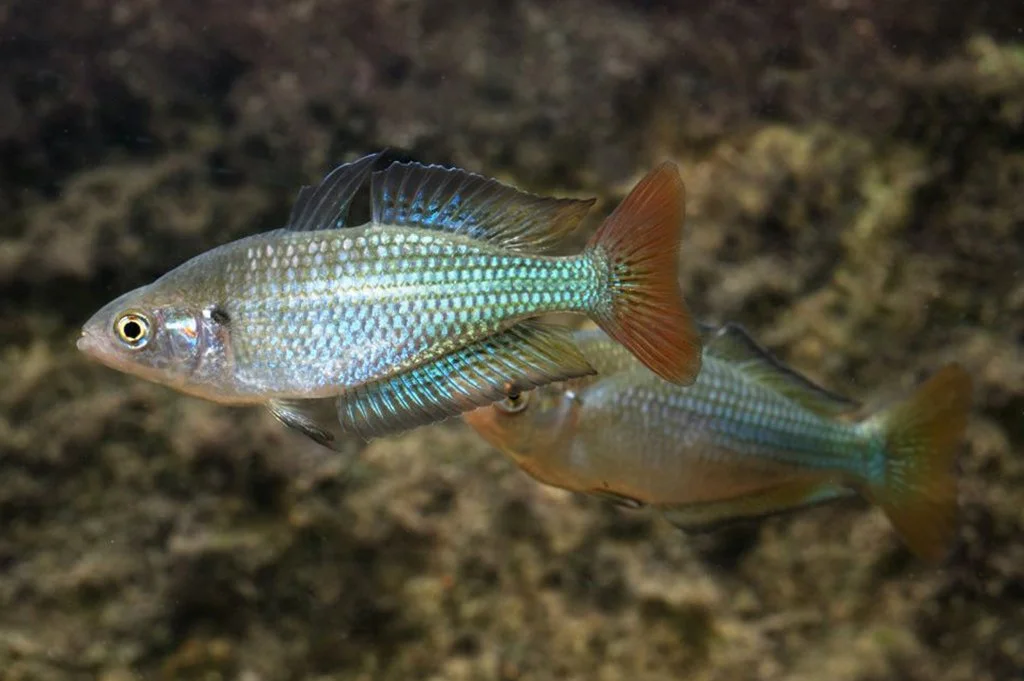
Fishes of the
Northern Rivers

Crimson Rainbow
The Crimson-spotted Rainbowfish is a native fish of eastern Australia, with males flashing bright red spots and vivid fins.
In the Northern Rivers, they are commonly found in creeks and slow-flowing rivers where submerged vegetation offers cover.
These rainbowfish are hardy and adaptable, but their habitats are vulnerable to clearing and water pollution.
They play an important ecological role, feeding on insects at the surface and providing prey for larger fish and birds.

Firetail Gudgeon
The Firetail Gudgeon is a small, lively freshwater fish recognised by the reddish tint on its tail, especially in breeding males.
In the Northern Rivers, they thrive in both rivers and smaller creeks, often coexisting with rainbowfish and other native species.
They feed on insect larvae and tiny crustaceans, helping control invertebrate populations.
Though common, their numbers depend on healthy aquatic vegetation and good water quality, features under pressure in the region from land use change.

Empire Gudgeon
The Empire Gudgeon is a hardy native fish, best known for the bright red and orange bands that appear on males during breeding season.
In the Northern Rivers, they inhabit rivers, creeks, and even estuarine areas, tolerating a wide range of conditions.
Their diet includes insect larvae, algae, and small crustaceans, making them important contributors to the food web.
Populations remain stable in many waterways, but like other natives they rely on clean water and intact riparian habitats.

Ornate Rainbow
The Ornate Rainbowfish is a colourful species with shimmering blues, golds, and yellows, a favourite among aquarists for its striking appearance.
Locally, they are found in clear, flowing streams of the Northern Rivers, including the acidic waters of coastal Melaleuca swamps where aquatic plants provide shelter and breeding sites.
They feed mainly on algae, zooplankton, and small insects, playing a key role in controlling algal growth.
Sensitive to habitat loss and declining water quality, their presence is a strong indicator of healthy freshwater ecosystems.

Pacific Blue Eyes
Pacific Blue Eyes are tiny schooling fish with distinctive bright blue eyes that glint in the light.
In the Northern Rivers, they occur in slow-moving creeks, swamps, and vegetated margins of rivers, often mingling with gudgeons and rainbowfish.
They consume small insects, zooplankton, and algae, while also serving as prey for larger native fish and birds.
These small fish are resilient but vulnerable to predation from invasive species like gambusia, as well as poor water conditions.

Olive Perchlet
The Olive Perchlet is a small, silvery fish with an olive-green sheen, once widespread but now considered uncommon in many parts of eastern Australia.
In the Northern Rivers, they survive in quiet backwaters, floodplain lagoons, and vegetated creeks, preferring dense aquatic cover.
Their diet includes insect larvae and plankton, linking them to both plant and animal energy pathways in the food web.
Habitat loss and fragmentation have reduced their range, and their presence is now a conservation priority for native fish recovery.






